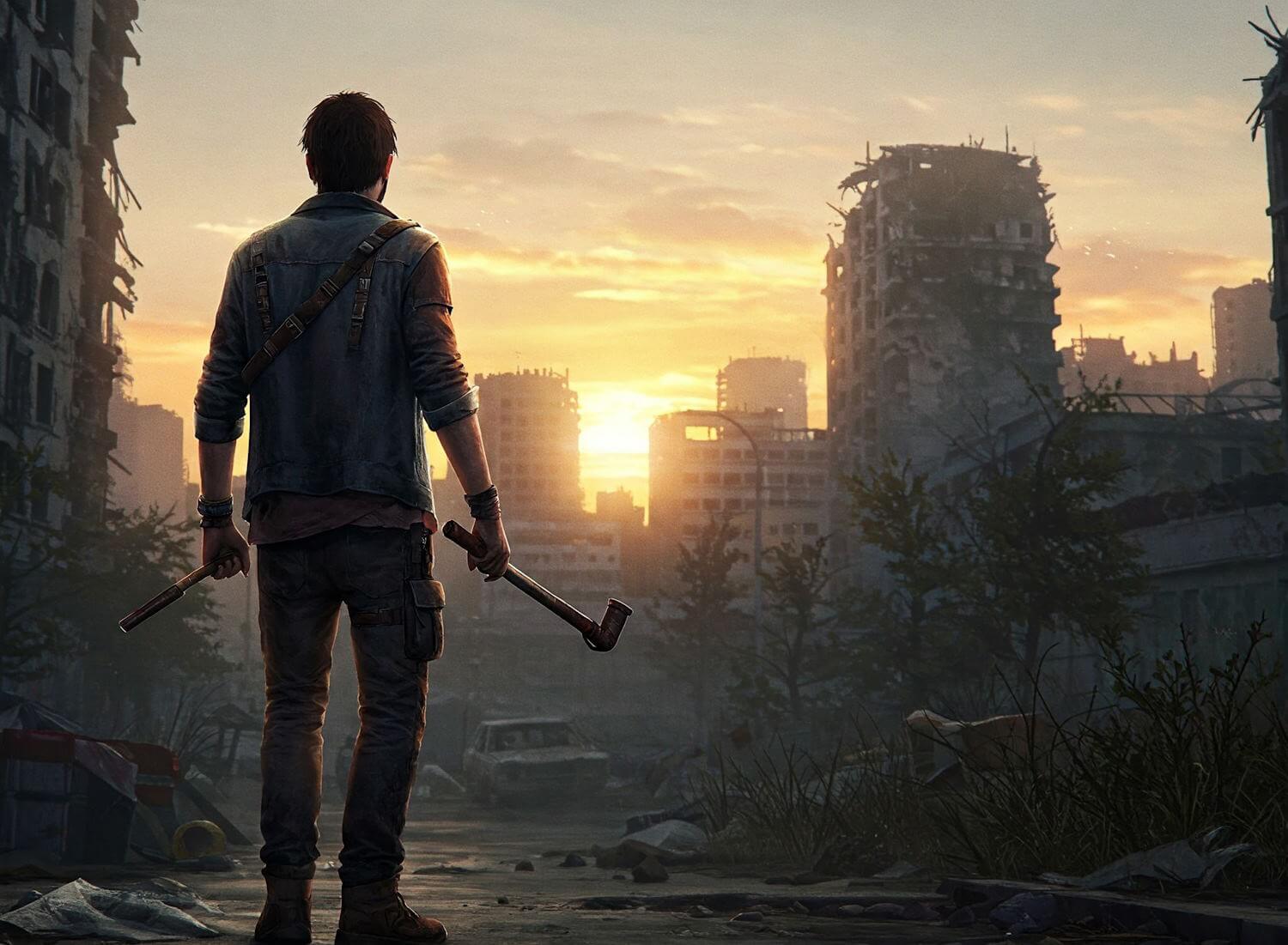Introduction to Dying Light 2
Dying Light 2 is the eagerly anticipated sequel to the original Dying Light, developed by Techland, which made waves in the gaming community upon its initial release in 2015. The franchise has garnered a loyal following thanks to its innovative mechanics, immersive open-world environment, and engaging narrative driven by player choices. Released on February 4, 2022, Dying Light 2 builds upon the solid foundation established by its predecessor, enhancing both its parkour elements and zombie survival experience within a dynamically evolving urban landscape.
The game is set in a vast open world that is five times the size of the original, with players navigating a post-apocalyptic city overrun by different factions and, of course, hordes of zombies. One of the defining characteristics of Dying Light 2 is its emphasis on choice and consequence, which affects not just the narrative but also the environment and gameplay. The decisions players make influence various outcomes, from the alignment of different factions to the state of the city itself, providing substantial replay value.
Parkour mechanics remain a crucial element in the gameplay experience, allowing players to traverse the city with fluidity and agility. The sense of freedom and mobility encourages exploration, while the ability to quickly navigate rooftops and alleyways is vital for survival against the relentless zombie threats. In addition to parkour, the game introduces new combat mechanics and crafting options that enhance the depth of engagement with both human and undead adversaries. As players delve deeper into the world of Dying Light 2, they will discover a rich tapestry of interactions and challenges that define the heart of this exhilarating survival-horror experience.
The Evolution of Parkour Mechanics
Since the release of the original Dying Light in 2015, the parkour mechanics have undergone significant evolution, particularly in the transition to Dying Light 2. The original game was lauded for its fluid movement system that allowed players to traverse a sprawling urban landscape while evading zombies. This experience has been greatly refined in the sequel, emphasizing even more the seamless integration of parkour and combat. Players can now execute an extensive range of parkour moves, including wall-running, vaulting, and sliding, which are further enhanced by a new progression system that unlocks advanced techniques as players advance through the game.
Dying Light 2 introduces a more dynamic environment that challenges players not only through its expansive geography but also through changing weather conditions and day-night cycles. The in-game world is intricately designed to encourage experimentation with parkour movements, allowing players to make use of their agility and creative thinking to navigate obstacles. The verticality of the environments is particularly noteworthy; players can leap from rooftops, use zip lines, and swing from ledges, which adds an exhilarating dimension to exploration and combat. This design encourages a sense of freedom, a critical element that elevates the overall gameplay experience.
Moreover, the developers have placed an emphasis on making the physics of parkour feel more authentic. Movement transitions are smoother, and character responsiveness has notably improved, enabling players to perform parkour maneuvers without interruption. The enhancements to the parkour mechanics in Dying Light 2 not only serve to improve gameplay fluidity but also contribute to the immersion within the post-apocalyptic setting, making every leap and roll feel pivotal in survival against the lurking hordes of zombies. Overall, these refinements effectively create an engaging balance between movement and narrative, ensuring that agility is not just a mechanic but a key aspect of the player’s journey.
Zombie Encounters: The Thrill of Survival
In Dying Light 2, encounters with zombies are a central element that amplifies the thrill of survival. Players face a variety of zombie types, each exhibiting unique behaviors and challenges. Common foes include the Shambler, a slow but resilient adversary, and the more formidable Howler, which can summon additional zombies, creating a need for tactical decision-making during encounters. Furthermore, nighttime introduces an elevated danger level, with more aggressive and unpredictable zombies emerging, thus heightening the tension.
The behavior patterns exhibited by these undead foes are essential in crafting a dynamic gaming experience. Zombies in Dying Light 2 are not merely mindless obstacles; they react to player movements, sound, and light. This responsiveness encourages players to adopt stealthier approaches, emphasizing exploration and resource management. For instance, players may choose to navigate rooftops to avoid encounters, utilizing parkour mechanics to their advantage. Alternatively, engaging in combat may become a necessity when players find themselves cornered or lacking escape routes.
The balance between exploration and survival is a defining factor in the overall experience of Dying Light 2. The game successfully intertwines parkour mechanics with combat interactions, requiring players to engage both their agility and strategic thinking. Every encounter with zombies makes players assess their surroundings and decide whether to flee, fight, or avoid altogether. The looming threat of an unexpected ambush maintains a constant state of alertness, enriching the game’s immersive atmosphere.
With its multifaceted zombie encounters and intricate dynamics, Dying Light 2 offers a compelling blend of adrenaline-pumping action and complex survival scenarios, creating a captivating experience for players and enthusiasts of the genre.
Exploring the Open World: Freedom vs. Constraints
The open world of Dying Light 2 offers a myriad of experiences that blend parkour mechanics with survival horror elements, primarily through its interaction with zombies. The game is set in a sprawling post-apocalyptic city filled with urban decay, towering skyscrapers, and expansive terrain. This environment fosters a sense of freedom, allowing players to navigate through the world in creative ways. The parkour system enables movement across rooftops, walls, and open spaces, presenting multiple routes to objectives and creating opportunities for exploration.
However, with this freedom comes certain constraints baked into the game design. Players will encounter environmental storytelling that not only enriches the narrative but also guides them toward specific side quests and challenges. These quests often require players to collaborate with NPCs or undertake missions that may restrict their movement choices, forcing them to engage in combat or stealth tactics rather than exclusively relying on parkour skills. Thus, the freedom afforded by the open world can be impacted by these game-pacing elements that structure gameplay to maintain tension and progression.
Moreover, player choices significantly influence the world around them. The decisions made in Dying Light 2 can alter the environment, NPC dispositions, and even the prevalence of zombie types in specific areas. These choices create a dynamic experience, where the outcomes of missions and interactions are unpredictable, further adding layers to the gameplay. While players might relish the ability to run, jump, and climb freely, modifications to the game world based on player actions can affect this autonomy, sometimes even making certain areas more hostile or challenging due to player decisions.
Co-op Gameplay and Community Interaction
Dying Light 2 offers a captivating co-op gameplay experience that significantly enriches the core mechanics of parkour and zombie survival. Players can team up with friends or other gamers online, creating a collaborative environment that fosters teamwork and strategy. The dynamics of navigating the post-apocalyptic world become more engaging when players join forces, combining their unique skills and abilities to tackle the challenges that the game presents.
One of the most prominent advantages of co-op gameplay in Dying Light 2 is the enhancement of communication among players. Effective coordination is essential for executing intricate parkour maneuvers and efficiently dealing with the relentless zombie hordes. Whether discussing strategies in real-time or sharing resources, players quickly learn that their success heavily relies on their ability to communicate. This interaction adds an additional layer of excitement, as players explore various approaches to complete missions and survive against the odds.
Moreover, the game’s design encourages dynamic interactions among players, allowing them to create unique lived narratives based on their collective actions. Every choice made during gameplay—whether it’s how to engage with the zombie threat or the moral dilemmas that arise—can significantly impact the game world. This creates a shared experience that is not only entertaining but also fosters a sense of community. Players often share their stories, strategies, and challenges faced during their co-op sessions, amplifying their engagement and connection to the game.
In essence, the co-op experience in Dying Light 2 transforms the gameplay by facilitating teamwork, enhancing communication, and encouraging dynamic storytelling. This aspect not only enriches the parkour and survival mechanics but also ensures that players derive a more enjoyable and immersive experience. The game’s multiplayer focus offers an opportunity to bond with friends or make new connections, making each session an adventure worthy of sharing.
The Fun Factor: Is It Engaging Enough?
The central concern for any game is whether it provides an engaging and enjoyable gameplay experience. In the case of Dying Light 2, initial feedback from both players and critics suggests a range of responses, indicative of varying expectations among the gaming community. The blend of parkour mechanics and zombie survival elements is designed to create a dynamic environment that players can navigate with agility. Many highlight the parkour system as a standout feature, offering a fluidity and freedom that enhances exploration. Players can traverse rooftops and maneuver through the urban landscape in an exhilarating manner, which contributes positively to the overall fun factor.
However, the enjoyment derived from the game’s mechanics is sometimes tempered by concerns about repetitiveness in mission structure and gameplay. Critics have noted that while the mechanics of parkour are engaging, the underlying objectives may not always provide the variety needed to sustain prolonged interest. The quest design has been described as lacking depth, leaving some players feeling that it becomes a grind after the initial excitement wears off. Additionally, while the narrative seeks to provide meaningful choices, the impact of these decisions on gameplay can feel diluted, diminishing the sense of agency and investment in the story.

